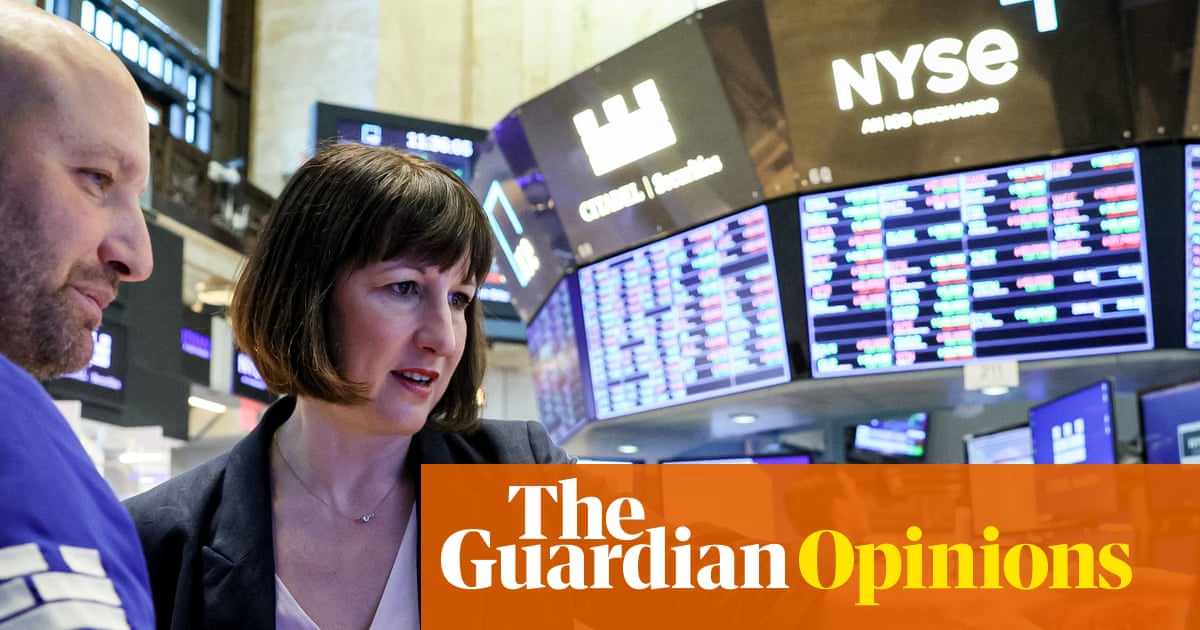Without wanting to sound like a jeremiad from the Daily Mail, I should warn you that Rachel Reeves is after your money. Part of her plan to grow the UK economy involves persuading cautious Britons to take more risks with their savings. It’s a win-win, she says. British business gets more investment and savers get better returns. The “nation of shopkeepers” becomes a nation of investors.
And it could all work out like that, of course. But there is the potential for things to go horribly wrong if the mooted letters from banks suggesting different investments and changes to risk warnings are done badly. There is also the danger of persuading people into the market in the good times, only for them to find themselves nursing losses in the next downturn.
There are things that you will need to know – and they will need to know that you know – if this is to be a responsible policy. People, voters, know about savings. Stocks and shares, not so much. Timing is everything in stock markets – being able to sit out falls in share values is vital, and if people need their money just as things are going badly, they will rue the day that they moved money from their cosy cash Isa.
Mis-selling is another problem. Allowing banks to flag up investments to people who are deemed to be sitting on more than enough in savings makes sense from the point of view that banks can see those accounts, but few would suggest that banks offer the best alternatives, or have previously done the best job of marrying consumers with the most suitable deals.
And then there’s the potential for scams – a call or email claiming to be from your bank, and suggesting you move your money, may not seem as suspicious if there are genuine communications flying around.
The plan is not untenable. I agree with a lot of the government’s comments about the stock market’s potential to provide people with greater returns than cash deposits. The numbers are inarguable (even if the Treasury’s choice of figures to show just how much better shares do has provoked disagreement).
I invest: I have emergency money in savings, some in fixed-rate accounts that offer a bedrock. I have a couple of stocks and shares Isas too – the first was an absolute disaster and demonstrates what could go wrong if people are persuaded to buy in at the top of the market.
I was just starting in personal finance and excited by everything I’d heard about shares. I had £500 in a savings account that was doing miserably, and I thought that by making it work harder I would get some money to put towards a flat deposit in a few years’ time. I chose a UK growth fund – a fairly cautious choice as it invested in big UK companies that I understood. It was March 2000: the peak of the dotcom bubble.
For the next decade, my investment was worth less than I had paid in. In 2009 it stood at £335.05 – the fund managers still had to be paid, so as well as falling prices, I’d had charges to contend with. I was lucky I didn’t need to realise my paper loss, but the six-monthly statements outlining it did not inspire me with confidence in the market.
Any attempt to persuade people out of their comfort zone is going to need to be clear about the potential for falls in value. But the chancellor has suggested that the risk warnings on investments now are too scary, and that they need to change. “For too long, we have presented investment in too negative a light, quick to warn people of the risks without giving proper weight to the benefits,” she said, in her Mansion House speech.
Balancing out risk warnings with details of the potential gains – as researchers have tested with consumers – does encourage more money into stocks and shares. However, those warnings shouldn’t be so diluted that people do not understand the unpredictability of when those gains might be available. If you have a specific timeframe in mind, you need to know that you might be getting back less than you paid in.
By the time I started my second stocks and shares Isa, I had learned a lesson about “pound cost averaging”. Never again would I put a lump sum in the stock market – paying in regularly is the best way to reduce risk. I’ve also spread my money across several funds – and not all in the UK. These things are simple and have not added to the cost, but they take time to explore, and are not necessarily what will be offered widely.
Past mis-selling scandals make me wary of handing responsibility for this to the big financial companies. Although the worst of the incentives that drove sales staff to heavily tout investments seem to have gone, there is a disincentive to offering the kind of holistic approach that is needed to make sure people are getting the guidance for specific investments at the right time: the promise is “targeted support”, but the more targeted it is, the more costly it will be for companies to provide.
At what point does it become wise to put money in the market, rather than savings? Advice on that will need to be clear. The answer is not one size fits all. Some people have bigger monthly commitments than others, so should keep more in easily accessible accounts. Retired people generally should be taking less risk than younger people because they have less time to ride out the falls. But we all have our own goals and financial ties. A bank letter that is generated as soon as someone’s savings account hits, say, £10,000 is not going to be offering the right advice for everyone. But making it more bespoke will cost more.
The chancellor is basically right – more people should be investing, and there are things that could be done to help this. Perhaps a note on savings accounts: a warning of the risk of inflation eroding money in low-interest accounts – something experts say is too often ignored. Confidence could be built by reminding us that if we have a private pension, we already are investors – it’s not something we will be doing for the first time. Increasing the contributions that must be paid into pensions through auto-enrolment will also bring money into the market. Better financial education in schools is crucial.
Investing is, like politics, a matter of rises and falls, risk and returns – ever subject to sudden turbulence. Reeves understands both spheres, but can the public live like that? That’s really quite the gamble.


